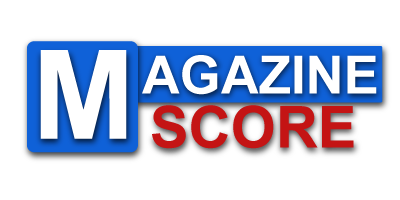Salesforce, as the world’s leading CRM platform, can transform your business by improving customer relationships, automating workflows, and enabling data-driven decision-making. However, implementing Salesforce is not just about switching on software — it requires a well-structured plan, stakeholder alignment, and technical precision.
In this blog, we break down the complete roadmap to a successful Salesforce implementation. Whether you’re a small business or a large enterprise, following this step-by-step guide will ensure a smoother, more effective rollout.
Phase 1: Pre-Implementation Planning
1.1 Define Your Business Goals and Objectives
Start by answering the critical “why” behind your Salesforce investment:
- Do you want to improve sales pipeline visibility?
- Enhance customer support response times?
- Automate marketing processes?
Clear goals help prioritize features, avoid scope creep, and justify the investment.
1.2 Secure Executive Sponsorship
A successful Salesforce implementation needs executive buy-in. Involve leadership early to:
- Set strategic direction
- Unlock necessary budget and resources
- Reinforce change adoption
1.3 Assemble the Right Team
Form a cross-functional implementation team:
- Project Manager – Oversees timelines and coordination
- Salesforce Admin – Handles configurations
- IT Lead – Integrates systems
- End-User Champions – Provide user perspectives
- External Consultants – Add expertise if needed
1.4 Choose the Right Salesforce Edition
Salesforce offers multiple products and editions:
- Sales Cloud, Service Cloud, Marketing Cloud, etc.
- Editions: Essentials, Professional, Enterprise, Unlimited
Pick the one that aligns with your current and future needs.
Phase 2: Discovery and Requirement Gathering
2.1 Analyze Existing Business Processes
Before designing in Salesforce, map your current workflows:
- How do sales reps manage leads?
- How is customer support tracked?
- What are current bottlenecks?
Use tools like process maps, interviews, and shadowing sessions.
2.2 Gather and Prioritize Requirements
Collect detailed requirements from different departments, then prioritize them using MoSCoW (Must-have, Should-have, Could-have, Won’t-have) or similar frameworks.
Phase 3: Design & Architecture
3.1 Create a Solution Design Document
This blueprint should include:
- Data Model Design (objects, fields, relationships)
- User Roles & Permissions
- Automation Rules (workflow rules, flows, process builders)
- Integration Plan
- UI/UX Mockups
3.2 Plan for Scalability
Design your org with future growth in mind. Avoid over-customization; use Salesforce’s native functionality when possible.
Phase 4: Configuration and Customization
4.1 Salesforce Configuration (Click Not Code)
Use Salesforce’s built-in tools:
- Object Manager to create custom objects and fields
- Page Layouts and Lightning Pages
- Validation Rules, Approval Processes, and Reports
4.2 Custom Development (When Necessary)
Use Apex, Visualforce, or Lightning Web Components if your requirements exceed standard capabilities. Ensure all custom code is:
- Well-documented
- Test-covered
- Easily maintainable
Phase 5: Data Migration
5.1 Audit and Cleanse Existing Data
Before importing, remove duplicates, fill missing fields, and standardize formats. Bad data in = bad CRM out.
5.2 Map and Import Data
Use tools like:
- Data Loader
- Data Import Wizard
- Third-party tools (like Dataloader.io, MuleSoft)
Perform test loads in a sandbox before full migration.
Phase 6: Integration
6.1 Identify Systems to Integrate
Common integrations include:
- ERP (e.g., SAP, NetSuite)
- Marketing Automation (e.g., Pardot, HubSpot)
- Customer Support (e.g., Zendesk, ServiceNow)
6.2 Use APIs and Middleware
Use REST/SOAP APIs or integration platforms (like MuleSoft, Zapier, Boomi) to create seamless data flow.
Phase 7: Testing and Quality Assurance
7.1 Conduct Thorough Testing
Test across all layers:
- Unit Testing (individual components)
- System Testing (end-to-end workflows)
- User Acceptance Testing (UAT) with real end-users
Document bugs, enhancements, and update the design accordingly.
Phase 8: Training and Change Management
8.1 Develop Training Materials
Create:
- Step-by-step guides
- Video tutorials
- Live webinars or workshops
Tailor content for each role.
8.2 Encourage User Adoption
Communicate early and often. Leverage “super users” and internal champions to:
- Promote usage
- Share tips
- Give peer-to-peer support
Use Salesforce’s in-app guidance features and Trailhead for self-learning.
Phase 9: Go-Live and Support
9.1 Plan Your Go-Live Strategy
Choose a rollout approach:
- Big Bang – everyone switches at once
- Phased Rollout – department-by-department
Have a rollback plan in case of issues.
9.2 Provide Post-Go-Live Support
Set up:
- Help desk or support channel
- A feedback mechanism
- A system for tracking issues
Monitor adoption metrics and make iterative improvements.
Phase 10: Continuous Improvement
10.1 Monitor KPIs and User Feedback
Regularly review:
- User engagement and login frequency
- Sales pipeline health
- Case resolution time
- Dashboard usage
10.2 Keep Evolving
Salesforce releases 3 major updates per year. Stay up to date and evolve your implementation accordingly.
Consider:
- Adding Einstein AI
- Automating more processes
- Expanding to other Salesforce Clouds
Final Thoughts
A successful Salesforce implementation isn’t a one-time project—it’s an ongoing journey of optimization and innovation. With the right roadmap, stakeholder alignment, and continuous feedback loops, you can ensure that Salesforce becomes a transformative tool for your organization.
Ready to get started? Whether you’re considering a new implementation or optimizing an existing org, following this structured roadmap will help ensure a smooth and ROI-driven Salesforce journey.








